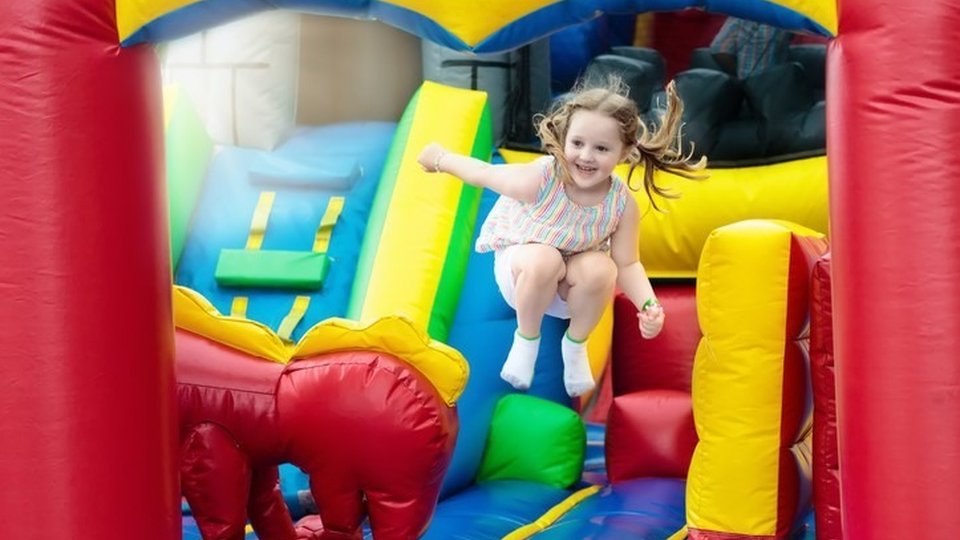Commentary
Gamification strikes hard at IAAPA European Expo 2021
Gamification has certainly excited the developer community, with numerous examples on display in Barcelona.

January 10, 2022 by Kevin Williams
The IAAPA European Expo 2021 convention in Barcelona presented numerous elements adding an interactive, scoring or progression element to previously passive experiences, which has rocked the amusement and attraction trade to its core. Some developers are actively trying to avoid the onrush of a need for interactivity, while others have strived to embrace this new opportunity to draw the guest to the experience.
This second in a three-part series of IAAPA Europe Expo coverage unpacks those exhibits focused on gamification elements.
At IAAPA Europe, the interactive roller coaster was explored again, this time by a concept from Maurer Rides, using a two-seater "Spike Coaster" platform. The company proposed an indoor attraction concept that offered the chance for the riders to take part in an interactive experience — guests ride through four different zones where they have to compete, avoiding light barriers, and achieving record times.
The ability to add a game element to any kind of attraction has seen innovation expound in the market.
The Play Company presented "Strike Arena." On the activity course, players register and then, in teams, compete by touching their corresponding illuminated colored pods throughout the arena, generating a score during 3-, 5- and 10-minute games.
This brings a simple "pay-to-play" element to the activity center scene, and is even married to wearables, offering a new level of engagement and revenue through gamification.
Interactive climbing wall, water parks
Developer Innovative Leisure is well known for its physical activity platform, and the company has now rolled out its "DigiWall" — a climbing wall that incorporates interactive elements to allow it to be played on, with scoring and game elements extending its appeal.
Rugged Interactive showed a range of "Active Fun" products, incorporating "lightpods" for family entertainment center, indoor venues and schools. Likewise, the inclusion of gamification across so many entertainment genres was difficult to miss.
Wiegand.waterrides presented its range of waterpark platforms, and also promoted its investment into the VR sphere. In partnership with Ballast VR, the company has developed its "VR Waterslide" platform, and its "VR Snorkelling" experience. The system employs a specially redeveloped and water-proofed Samsung Galaxy smartphone to provide the virtual experience.
The water park company also illustrated the gamification expanding into the entertainment landscape, showing its "Gamewave" platform which incorporates targets for the players to hit as they rush down water slides.
Making the waterpark more engaging with guest interaction was also seen from specialist Polin Waterparks — the company revealing its "Aiplex," an image recognition platform that can recognize guests and capture their activities through the venue. This digital album creates a personalized record of their stay, acting as a strong secondary spend vehicle for waterparks, as well as able to be considered in other aspects of the attraction scene.
Mixed reality trampoline
Valo Motion, well-known for gamified, fun and shareable interactive sports experiences, launched "ValoJump air" aimed at a wider selection of venues with a lower ceiling height requirement and using the "Air Track" inflatable gymnastic mat, which operators can retrofit to the system. Operationally, it is much like the original "ValoJump" mixed reality trampoline platform.
Both attractions come with two different screen ratios, with 55-inch and 86-inch displays, and with access to two-player games designed for event management and competitions.
Valo Motion also introduced "ValoClimb L1," with this update employing a new laser lamp projector with more vibrant colors and minimal maintenance, supported by reduced lifetime cost, needing no lamp changes.
Fitness gaming
A lot of the gamification of the play space has come from influences seen in the fitness and exercise market known as "exergaming."
Several examples of previous fitness game systems looking at a FEC and attraction deployment were seen on the IEE floor, such as from CSE Entertainment, which launched its "cycloBeat," which sees networked play with eight exercise bikes having players compete in a game experience.
The concept borrows heavily from the popularity of "Spin Class" but also adds an interactive game element. The system offers competitive skill games such as "Fusion GP," and a motocross bike race where the player supplies their bike's power.
On the booth attendees could try "runBeat" — with networked races between players on two treadmills, although the platform is able to run eight networked races at the same time. This system has already been installed in several family entertainment centers. The company also presented its latest "iWall 3.0" — an active multi-player motion capture game system, offering a fun workout while competing.
Gamification has certainly excited the developer community.
Part three in this three-part IAAPA European Expo 2021 coverage will focus on virtual reality entertainment exhibits.
(Editor's note: Extracts from this blog are from recent coverage in The Stinger Report, published by KWP and its director, Kevin Williams, the leading interactive out-of-home entertainment news service covering the immersive frontier and beyond.)
About Kevin Williams
Along with advisory positions with other entrants into the market he is founder and publisher of the Stinger Report, “a-must-read” e-zine for those working or investing in the amusement, attractions and entertainment industry. He is a prolific writer and provides regular news columns for main trade publications. He also travels the globe as a keynote speaker, moderator and panelist at numerous industry conferences and events. Author of “The Out-of-Home Immersive Entertainment Frontier: Expanding Interactive Boundaries in Leisure Facilities,” the only book on this aspect of the market, with the second edition scheduled for a 2023 release.


